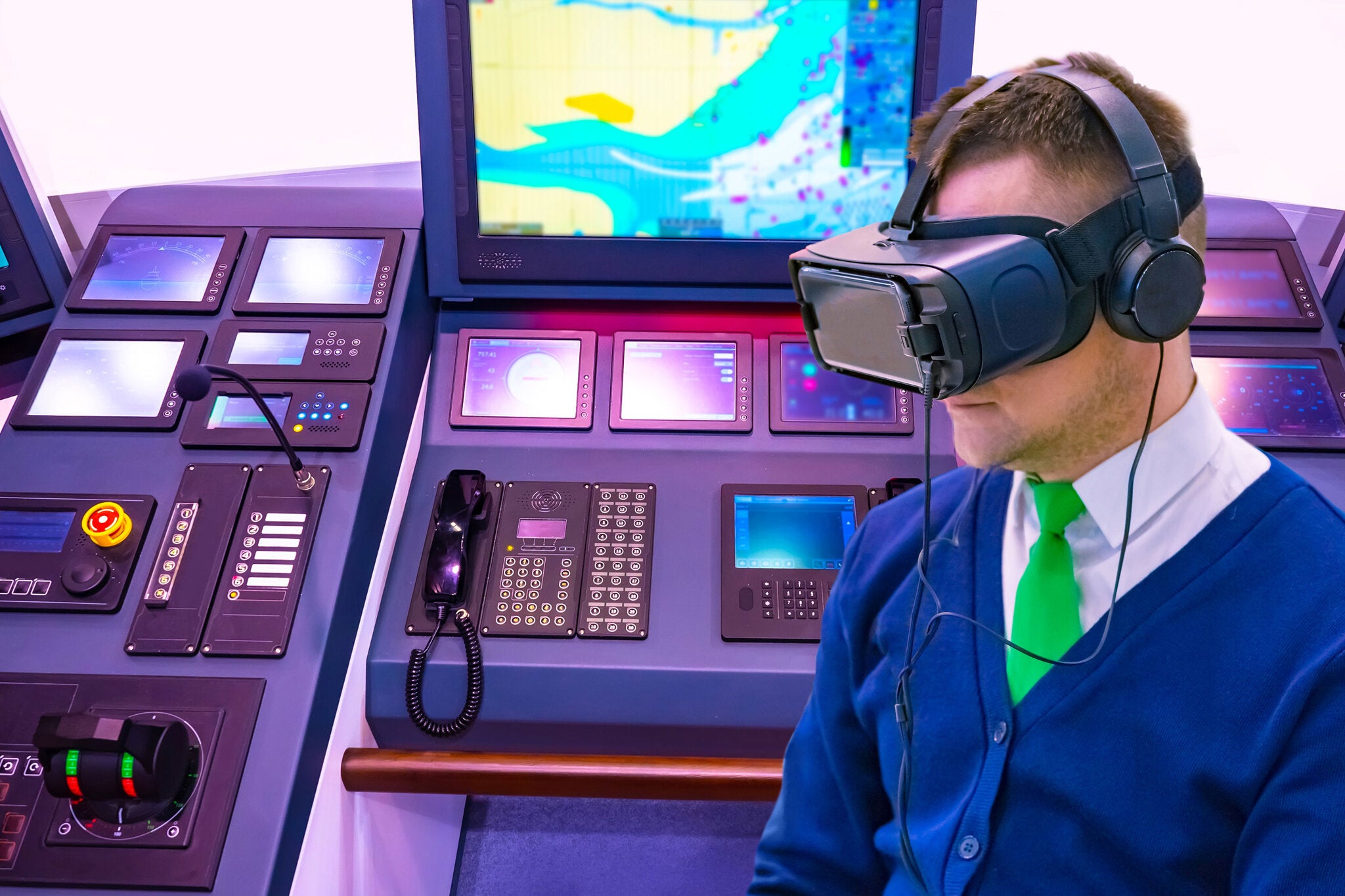- TECHSWU
- Posts
- TECHSWU #14
TECHSWU #14
Tech Stuff We Use



🌐 Vector Data Services for AI are a moveable feast, and Qdrant is joining the party with their Qdrant Hybrid Cloud 🏢. This managed hybrid cloud service allows businesses to deploy and manage vector databases across any cloud provider or on-premise infrastructure 🌤️. It offers full control over data for maximizing performance, security, and cost efficiency in AI-driven applications 🚀.
Key highlights of Qdrant Hybrid Cloud include:
🔹 Run-anywhere self-service solution for deploying vector databases
🔹 Maximizes performance, security, and cost efficiency for AI applications
🔹 Provides complete database isolation for data protection
🔹 Handles billions of vectors with efficiency and scale
🔹 Offers specialized features for performance optimization
🔹 Meets strict risk and compliance standards
Qdrant aims to redefine the standard for enterprise-grade AI applications and foster trust and reliability through its open source principles 🔄. As the vector database market continues to grow, Qdrant's managed hybrid cloud service stands out as a flexible and manageable solution 💪. With Qdrant Hybrid Cloud, the possibilities for running smart AI applications everywhere become limitless 🌟.

Ghost guns are already illegal in Maryland ⚠️. However, a new bill in Prince George's County aims to crack down even more on these untraceable firearms 🔫. The bill would make it illegal to give a juvenile a ghost gun or the technology and components needed to make one. The council hopes that state lawmakers will replicate the law statewide next year 🏛️. Council member Krystal Oriadha believes it's important to stay ahead of technological advancements and provide law enforcement with the tools necessary to hold individuals accountable for arming young people with weapons 🔒💪. Let's keep our communities safe and protect our youth from gun violence! 🚫🔫✋

Pimax has unveiled two new high-end VR headsets, the Crystal Super and the Crystal Light, at its Frontier 2024 event. The headsets boast an impressive 29.5 million pixels, allowing for a truly immersive virtual reality experience. Users can switch between QLED and micro-OLED panels, giving them the flexibility to customize their visual experience. Pre-orders for the Crystal Light are already open, with shipping expected to begin in May 👀🚀, while the Crystal Super will be ready for shipping in Q4 2024. The pricing for these headsets starts at $699, making high-end VR technology more accessible to a wider audience. The possibilities for virtual reality are expanding, with a variety of games, simulations, and applications available, as well as the potential for haptic feedback devices and VR in education and professional training. Pimax's new VR headsets give users the key to unlocking endless virtual possibilities. 🎮🌟

🌟 The holy city of Madinah in Saudi Arabia has climbed the ranks in the IMD Smart City Index, securing the 74th position out of 142 cities. This marks an improvement from its 85th position in 2023. 📈 Madinah also ranked seventh among Arab countries for digital progress and city readiness. The city's Al-Madinah Region Development Authority has worked with government departments to enhance coordination for digital initiatives and sector achievements, with the goal of achieving an advanced ranking among smart cities globally. In addition to Madinah, Riyadh ranked 25th, Makkah ranked 52nd, and Jeddah ranked 55th on the smart city index. 🏙️🌍 The IMD Smart City Index assesses various aspects of city development, including health, safety, employment, education, mobility, cultural activities, governance, and economic and technological harmony. 📊💡

Telecommunication companies are using network slicing technology to partition their networks into multiple virtual networks, improving optimization and scalability for IoT devices. However, this technology also introduces new cybersecurity risks that companies must be prepared for.
Highlights:
• Network slicing technology divides a physical network into multiple virtual networks, allowing IoT devices to be separated based on their usage. 🌐
• Network slicing benefits IoT by optimizing resource utilization and reducing operating expenses. 💰
• The security risks of network slicing include man-in-the-middle attacks, configuration attacks, data breaches, lateral movement, and distributed denial-of-service attacks. 🔒
• To mitigate these risks, companies can implement telecom inventory management, zero-trust architecture, secure communication practices, and slice segmentation. 🛡️
• Ensuring the security of network slicing is essential to maximize its benefits and protect IoT ecosystems. ✅

🖨️ The Evening Standard has issued a review of the best printers for small businesses in 2024 and picked six models for consideration.
✨ The Epson ET-3850 is recommended for its high-quality, compact functionality, while the Canon MAXIFY GX6050 offers a quicker solution for small to medium-sized businesses.
🚀 The Epson XP-8700 may be small but can handle tasks at speed, while the Canon i-SENSYS MF465dw is recommended for monochrome printing.
⚡ The Kyocera ECOSYS P3155DN was awarded for its ultra-fast print capacity and the Lexmark MC3224i proved more than adequate for general office needs.
❌ However, the standard home printer does not perform well in professional settings and small businesses need something with much more power.


The 'zIng' hand-worn smart display is a conceptual device designed to provide athletes with connectivity. 👐📲 The wearable is fitted around the palm and sits on the back of the hand, offering a range of features. It is made with an aluminum frame and Gorilla Glass over the display for durability. The display is paired with an elastic belt to ensure a snug fit during physical activity. This hand-worn smart display is an alternative to smartphones and smartwatches for athletes to stay connected while on the go. ⚡🏃♀️
Highlights from the article:
• 'zIng' hand-worn smart display is designed for athletes to stay connected 💪🔗
• Made with an aluminum frame and Gorilla Glass for durability 🛡️💎
• Provides a range of features and can be worn securely during physical activity 🎯✅
Key takeaways:
• Wearable technology in the sports industry is becoming increasingly popular ⌚⚽
• The rise of palm-worn devices is shaping a new era of intuitive tech interactions 🌟🖐️
• Smart displays tailored for active lifestyles are revolutionizing how users access information 📊🏞️

FitSkin is a beauty tech solution that analyzes the skin and hair to provide personalized product recommendations for consumers. It uses dermatology-grade technology to analyze what the eye cannot see, such as skin tone, moisture, oil, fine lines, and pores. FitSkin's technology is accurate and validated by external R&D labs. 🌟 It is differentiated from its competitors by its ability to provide accurate skin color and foundation shade matches. FitSkin has partnerships with Sephora, Walgreens Boots Alliance, and Ulta Beauty, and its technology has been integrated into the shopping experience at these retailers. Beauty advisors love FitSkin because it saves them time and provides them with data-based results to make product recommendations. 💁♀️ FitSkin is also changing the professional channels in the beauty industry by providing lab-grade scalp and split ends analysis. 🔬 FitSkin connects the online and offline experience, allowing consumers to see their recommended products and skin analysis results in-store and online. FitSkin plans to continue evolving its technology and launching new analyses every year. 🚀

📱 Staying up-to-date with the latest gadgets is important in today's technology-driven world. It allows you to be more productive and organized in your daily life and provides access to tools and applications that can simplify various aspects and processes. However, keeping up with the constant influx of tech news can be challenging. Here are some strategies to help you stay informed:
• 📰 Curate reliable sources: Create a list of trusted tech news websites and blogs that provide informed writing about gadgets.
• 🤩 Follow influencers: Stay connected with tech influencers, thought leaders, and industry experts on social media platforms like Twitter, LinkedIn, and YouTube.
• 🗞️ Use aggregator platforms: Install applications like Flipboard or Feedly to collect and organize tech news from various sources.
• 💬 Engage with online communities: Participate in tech forums, join relevant Facebook groups, and subscribe to subreddits where people discuss the newest gadgets and share recommendations.
• 🎉 Attend tech events and conferences: Explore trade shows and conferences like CES and Mobile World Congress to discover new gadgets and emerging technologies.
• 🎓 Invest in continuous learning: Take online courses, listen to tech podcasts, read tech books, and participate in webinars to enhance your knowledge and understanding of gadgets and the tech field.
• 📲 Leverage social media platforms: Follow tech brands and manufacturers on platforms like Twitter, Instagram, and LinkedIn, and interact with user communities dedicated to specific gadgets or brands.
By following these strategies, you can stay up-to-date with the latest gadgets and make informed decisions about your tech purchases. So, don't wait any longer and start your journey to staying connected in the digital age! 💪✨

Seafarers need to adapt to the changing nature of work in the maritime industry as it embraces digitalization, automation, and alternative fuels 💼⚓️
Over 80% of seafarers believe they need more training to deal with new technologies in the sector 📈👩💻👨💻
New skills and competencies will be needed for seafarers in response to these changes 🆕📚
Digital skills such as data fluency, digital operation, and basic software and organizational competence are important, as well as cybersecurity training 🖥️🔍💻
Training for handling new fuels is crucial, as alternative fuels can be more volatile and difficult to manage than traditional options ⛽️🔥⚠️
Ensuring a just and equitable transition to digitalization and improved sustainability in the industry is a challenge, especially in regions with little control over trainers 🌍❌
The Maritime Just Transition Task Force is working on developing a comprehensive baseline training framework for seafarers in decarbonization 🌊🚢🌿
Steps are being taken to provide specialized training for seafarers, including Train the Trainer (TTT) courses and free courses on low-carbon shipping 📚✅🔋

The refurbished wearable device market is experiencing steady growth as consumers look for affordable yet functional technology solutions that prioritize sustainability. Here are some key highlights from the article:
• 💥 The refurbished wearable device market witnesses steady growth as consumers embrace affordable yet functional technology solutions.
• ♻️ Refurbished wearables gain popularity, offering quality performance at lower prices.
• 🌍 Key players refurbish devices to stringent standards, ensuring reliability and functionality while reducing electronic waste.
• 📈 The market research report predicts a booming CAGR of 13.5% for the refurbished wearable device market from 2024 to 2030.
• 💡 Future trends in the market will focus on affordability, sustainability, and innovation.
• 🔬 Manufacturers will invest in refurbishment processes that maximize product quality and reliability while minimizing costs.
• 🌱 Advances in materials and manufacturing techniques will enable more durable and eco-friendly products.
• 💪 Innovation in design and functionality, such as modular components and upgradable firmware, will extend the lifespan of wearable devices.
• 📱 The market is segmented into product types such as smartwatches, fitness trackers, hearables, and others.
• 💪 The application segments include health and fitness, and communication and connectivity.
• 💰 The refurbished wearable device market is poised for sustained expansion, offering consumers a budget-friendly and eco-friendly alternative to new products.
In conclusion, the refurbished wearable device market is thriving as consumers embrace sustainable and affordable technology solutions. With advancements in refurbishment techniques and a focus on quality and reliability, the market is expected to continue growing, catering to the needs of eco-conscious consumers seeking value and performance in their tech accessories.

🤖 The legal implications of generative artificial intelligence (AI) are explored in a Q&A interview with Maura R. Grossman, a Research Professor and Principal at Maura Grossman Law. Generative AI is a subset of AI that creates new content in response to prompts from humans. Some key points from the interview include:
• Generative AI creates content that is increasingly difficult to differentiate from content created by humans. 🧠💡
• The legal system faces challenges in determining the admissibility of AI evidence in court, such as deepfakes. 👩⚖️📺
• Deepfakes are AI-generated content that is not real and can be difficult to detect. 👻📹
• The courts will need to consider the potential risks and impact of admitting deepfake evidence, as it can influence jurors' perceptions and memories. ⚖️💔📑
• ChatGPT, a popular generative AI system, is being used by lawyers and litigants to prepare court filings, but there have been instances of false information being included. ⌨️📝❌🚫
• Judges and their staff have used generative AI to draft opinions, but concerns arise due to the system providing different answers to the same question and potentially including false information. 👨⚖️🖊️❓❗️
The interview highlights the need for the legal system to adapt and address the challenges posed by generative AI in order to ensure fairness and accuracy in legal proceedings. ⚖️🔍👁️

🔌 In April 2024, there are several electric car lease deals available with manufacturer incentives that make them more affordable than traditional gas vehicles. Some highlights from the article include:
• Toyota is offering a lease deal for the 2023 bZ4X electric crossover for $139 per month with $1,999 due at signing, making it the cheapest vehicle to lease in the country. 🚗💨
• Lexus is offering a lease deal for the 2023 RZ electric vehicle for $199 per month with $0 due at signing in Colorado, and $399 per month with $399 due at signing on the East and West Coasts. 🌟
• Hyundai has a lease deal for the IONIQ 6 electric sedan for $330 per month with $350 due at signing, and for the IONIQ 5 electric SUV for $209 per month with $3,499 due at signing. ⚡💼
• Lucid is offering up to $29,650 in savings on 2023 Lucid Air models through a combination of inventory discounts and credit programs. 💰
• Other lease deals include the Hyundai Kona EV for $164 per month, the Kia EV9 for up to $7,500 off MSRP, and the Subaru Solterra for $329 per month with no money down. 🌿💸
These lease deals are available until the end of April and may vary by region. Don't miss out on these electrifying offers! ⚡😉

Technology has transformed the way we approach food and dining. Here are 10 tech-driven changes that have revolutionized the industry:
🚚 Online food delivery platforms have made ordering food more convenient, allowing consumers to explore various cuisines and have their favorite meals delivered to their doorstep with just a few clicks.
🥘 Meal kit services provide pre-portioned ingredients and recipes directly to consumers' homes, simplifying meal preparation and allowing individuals to experiment with new flavors and cooking techniques.
👻 Virtual restaurants, or ghost kitchens, operate solely through online delivery platforms, offering consumers a diverse array of dining options without the need for a physical location.
🙅♂️ Contactless dining solutions, accelerated by the COVID-19 pandemic, prioritize safety and hygiene by implementing technologies such as digital menus and touchless payment systems.
🤖 Artificial intelligence (AI) enables personalized dining experiences tailored to individual preferences through data analysis and machine learning algorithms.
🍳 Smart kitchen appliances, such as smart ovens and refrigerators, leverage connectivity and automation to enhance efficiency and convenience in meal preparation.
🔗 Blockchain technology ensures food safety and transparency by allowing consumers to track the journey of their food from farm to fork.
🌟 Augmented reality (AR) technology offers immersive culinary experiences, allowing diners to engage with their meals in innovative ways.
🖨️ 3D food printing allows chefs to create intricate edible designs with precision, offering endless possibilities for creativity and customization.
🌱 Sustainable food solutions, such as vertical farming and plant-based alternatives, address environmental concerns and promote a more eco-friendly future.
As technology continues to evolve, we can expect even more exciting changes in the food and dining industry, leading to new culinary experiences and innovations. 🌍🍽️📱
